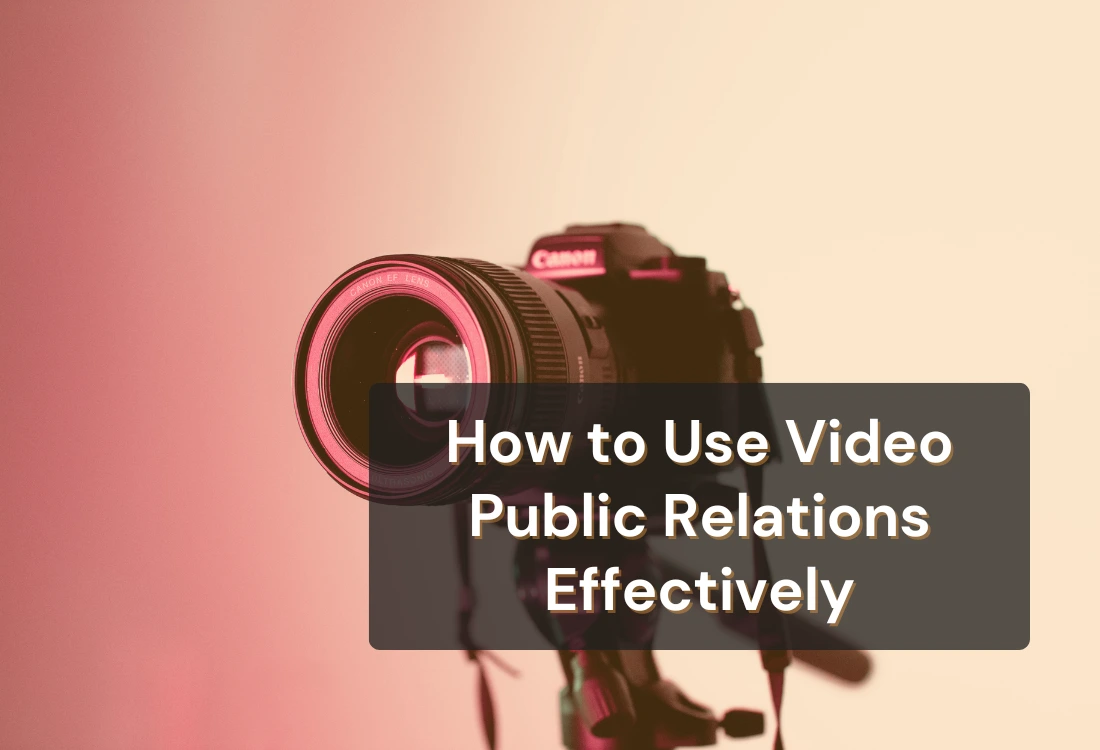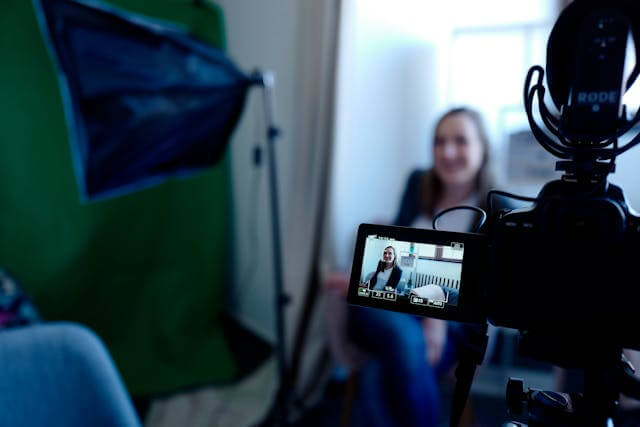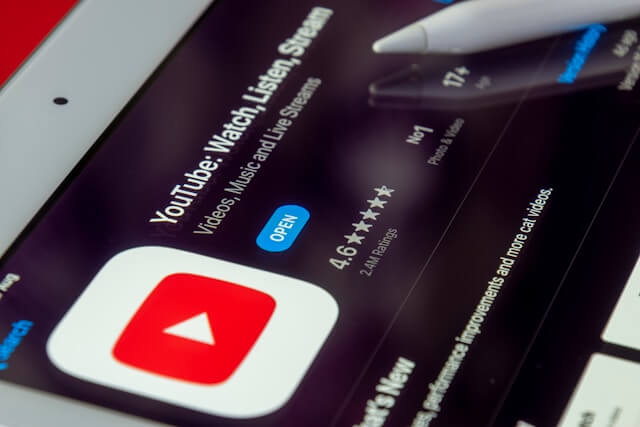



Video has become an essential part of communication strategies, especially for public relations teams seeking to craft persuasive, trustworthy, and widely shareable content. Modern public trust demands more than just press releases. Visibility, clear communication, and a personal connection are essential. This is where the value of video public relations becomes apparent.
By integrating video content into PR strategies, brands aren’t just speaking, they’re being heard. Video allows companies to respond in real-time, shape narratives, and build credibility through storytelling, all while engaging audiences across platforms that reward motion and authenticity.
Platforms like LinkedIn, Instagram, and YouTube have made it easier than ever for brands to get in front of the right audience without relying solely on traditional media outlets.
Here’s why it works:
Incorporating video into public relations campaigns not only improves visibility, it increases the chances your message will resonate.

Gone are the days of relying solely on PDFs and email blasts. Incorporating brief videos into press releases—showcasing product demonstrations, executive interviews, or exclusive behind-the-scenes content—enables companies to significantly increase audience interaction and media attention.
Why it works:
This content can be embedded directly on your newsroom page or linked in media kits for reporters to use.
When something goes wrong, be it a product recall, service disruption, or reputational hit, video offers a direct line to public perception. A well-delivered statement by a company leader can demonstrate transparency and composure.
Use video for:
Consumers want to know what a company stands for. Video allows organizations to show, not just tell, their mission, team culture, or impact stories.
Tactics include:
These narratives aren’t just promotional—they build long-term affinity and help shape brand identity.
Partnering with influencers and micro-creators expands the reach of PR messages. These collaborators bring trust, relatability, and built-in audiences. When handled correctly, these campaigns are authentic extensions of a brand voice.
Ideas:
User-submitted clips can also be repurposed into press pitches or featured in brand updates, showing grassroots support.

Selecting the appropriate format requires understanding your audience, your message, and where the video will live. It’s not always about production quality, it's about intentionality. The right format supports the clarity, tone, and impact of your message while also optimizing it for the platforms your audience frequents.
Short-form video (typically under 60 seconds) is highly effective for grabbing attention on fast-moving platforms like Instagram, TikTok, and X (formerly Twitter). These quick clips work best for bite-sized updates, product announcements, teaser campaigns, and engaging behind-the-scenes moments. Their brevity encourages repeat viewing and makes them perfect for mobile consumption. Additionally, short-form videos tend to perform well with younger demographics and are easier to repurpose across multiple social channels.
In contrast, long-form video content, ranging from two to five minutes, offers the depth needed to explore complex topics. This format suits interviews with key executives, thought leadership content, company culture stories, and detailed explainers. While they require a greater time commitment from viewers, long-form videos can build trust and authority by showing a fuller picture. They’re ideal for embedding in press releases, using on landing pages, or sharing with journalists as part of a media kit.
Live video creates a sense of immediacy and transparency. It’s particularly useful for real-time events like product launches, press conferences, Q&A sessions, or emergency updates. Live streaming builds engagement because audiences can comment in real time, making it feel interactive and spontaneous. However, it comes with risk, there’s no editing or post-production polish. That means strong preparation is critical to ensure the message stays focused and professional.
On the other hand, pre-recorded video provides greater control over message delivery, production quality, and brand consistency. It allows you to plan for multiple takes, fine-tune messaging, include captions or subtitles, and maintain higher visual standards. For sensitive communications, such as crisis responses, corporate updates, or strategic storytelling, pre-recorded videos are usually the safer bet. They’re also easier to repurpose for use across earned, owned, and paid media.
Different social and web platforms reward specific aspect ratios and formats, and adapting your content accordingly increases visibility and engagement:
Tailoring the aspect ratio and length of your video content ensures it performs better within the native environment of each platform, increasing the chance it will be watched, shared, and picked up by media outlets.
Creating a polished video is only part of the equation. To make a real impact in public relations, video content needs to be crafted and distributed with intention. From message clarity to technical optimization, each element plays a role in ensuring your videos not only reach your audience but also influence them effectively.
Below are the key best practices to follow when executing a video public relations strategy.
The opening seconds of any video are the most important. Attention spans are short, especially on mobile devices, and your audience will decide almost instantly whether to keep watching. Begin with a bold visual, a compelling statement, or an immediate value hook. Avoid lengthy introductions or slow build-ups. For example, if you're announcing a product, lead with a visual demonstration. If it’s a crisis response, start with the spokesperson on camera expressing the brand’s position upfront.
Trying to convey too many ideas at once dilutes your impact. The most effective video PR campaigns zero in on a single, clear message. Whether it's a brand milestone, leadership commentary, or a product update, the content should revolve around a focused narrative. Clarity improves retention and makes it easier for the press and audience to extract your key takeaway. If you have multiple announcements, consider breaking them into separate clips rather than cramming everything into one video.
Silent autoplay is the default setting across many social platforms. According to Verizon Media, 92% of consumers view videos with the sound off on mobile, and 80% are more likely to watch a video to completion when captions are available. Including subtitles ensures your message is accessible to a wider audience, including those who are hearing-impaired or in sound-off environments. Beyond accessibility, captions also improve comprehension and allow your content to be indexed more effectively by search engines.
Your video content should feel like a cohesive extension of your brand identity. That means using consistent fonts, color palettes, logo placements, and tone across all visual assets. A well-branded video fosters recognition and professionalism, increasing viewer trust. Think of your video assets as part of your brand’s media kit, something a journalist or partner could easily include in an article or presentation. Consistency not only supports visual storytelling but also builds long-term credibility.
Search engines rely on metadata to understand and rank video content. Just as with traditional web content, SEO principles apply here. Give your video files descriptive, keyword-rich filenames (e.g., “CompanyX_ProductLaunch_2025.mp4” instead of “video123.mov”). Include alt text, captions, and transcriptions to provide contextual signals for search engines. Don’t overlook YouTube descriptions either, they’re prime real estate for embedding links, keywords, and time stamps that improve ranking and user experience.

Even the best-produced video won’t perform if it’s hidden from view. Public relations teams should take a multi-channel approach to distribution, tailoring content for each audience segment:
Your video public relations strategy should also consider syndication. Upload clips to video-sharing sites like YouTube and Vimeo, where they can be discovered by both media outlets and audiences searching organically for related content.
When sharing video content intended for press use, always provide downloadable versions in common formats (e.g., .mp4) via cloud links or media portals. Accompany these files with clear licensing information, such as “Media use permitted with attribution,” to remove friction and make it easy for journalists to use your assets legally. If possible, include a brief usage guide or brand media kit to ensure your video is presented accurately and in line with your brand values.
In public relations, every second on camera counts. Clear and confident communication from CEOs, spokespeople, and brand ambassadors directly impacts message reception. A teleprompter app helps eliminate hesitations, missed lines, and off-script detours, ensuring your video statements stay sharp, consistent, and professional.
With Teleprompter.com, you can display your script directly on screen, control scroll speed, and maintain eye contact while recording—ideal for press videos, product launches, or investor briefings. It’s a simple way to boost delivery without adding complexity to your setup. Sign up for free at Teleprompter.com and take control of your next PR video with tools that keep your message aligned.
Creating and distributing videos is just the beginning. To understand the return on your PR investment, you need to track meaningful metrics. These go beyond vanity numbers and help you evaluate how your video content influences perception, reach, and business outcomes.
Engagement rates such as likes, comments, shares, watch time, and retention indicate how well your video is resonating with viewers. A high watch time suggests that your message is compelling, while drop-off points can help you identify where your narrative may lose steam. Shares and comments, particularly on social media, offer clues about your audience’s emotional reaction and can spark further organic visibility.
For PR campaigns, earned media pickup is critical. Monitor how often your video is quoted, embedded, or linked in articles, blog posts, and news outlets. Tools like Meltwater, Cision, or Google Alerts can help track these mentions. Videos that are designed to complement press releases tend to generate more interest from journalists looking for multimedia assets. Every media mention not only extends reach but also improves domain authority through backlinks, supporting long-term SEO goals.
Understanding how video drives traffic to your owned channels is key. By using UTM parameters in your video URLs or in descriptions, you can track which platforms and campaigns are bringing users to your site. Analyzing metrics in Google Analytics such as session duration, bounce rate, and conversion paths reveals how effective your videos are in motivating action beyond the view itself.
Public reaction matters. Use social listening tools like Brandwatch, Sprout Social, or Mention to monitor how people are responding to your video content across different platforms. Are comments positive, critical, or neutral? Sentiment analysis helps gauge emotional response, particularly useful after crisis communications or brand announcements. Pairing sentiment data with video performance allows you to assess both reach and reception.
Not every video leads directly to a conversion, but some will spark interest that results in high-quality leads, especially in B2B contexts. If a video is included in a landing page, email campaign, or PR pitch, track how many inbound messages, demo requests, or sign-ups originate from those viewers. Use lead tracking tools integrated with your CRM to understand which video assets are generating genuine engagement from media contacts, partners, or potential customers.
Video has evolved into one of the most persuasive tools available to public relations professionals. From strengthening press releases to humanizing crisis responses, its power lies in its ability to build trust, provide clarity, and connect with audiences across platforms. When used strategically, video public relations isn’t just effective—it’s essential for brands looking to stay relevant, responsive, and credible in a media-driven environment.
By combining thoughtful storytelling, format alignment, and smart distribution, your videos can do more than inform, they can influence. Now’s the moment to rethink your PR toolkit and make video a core component of your communication strategy.



